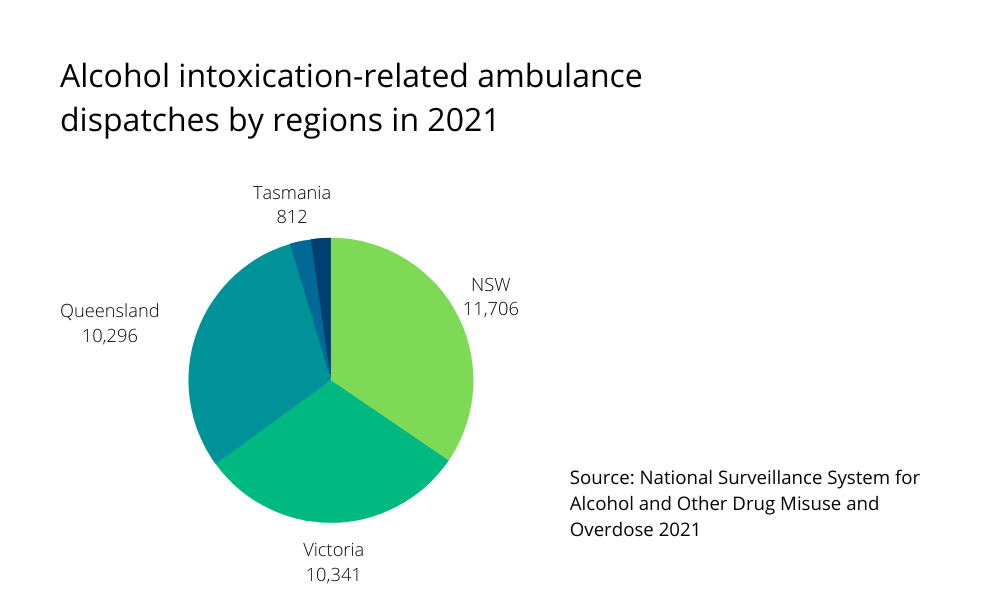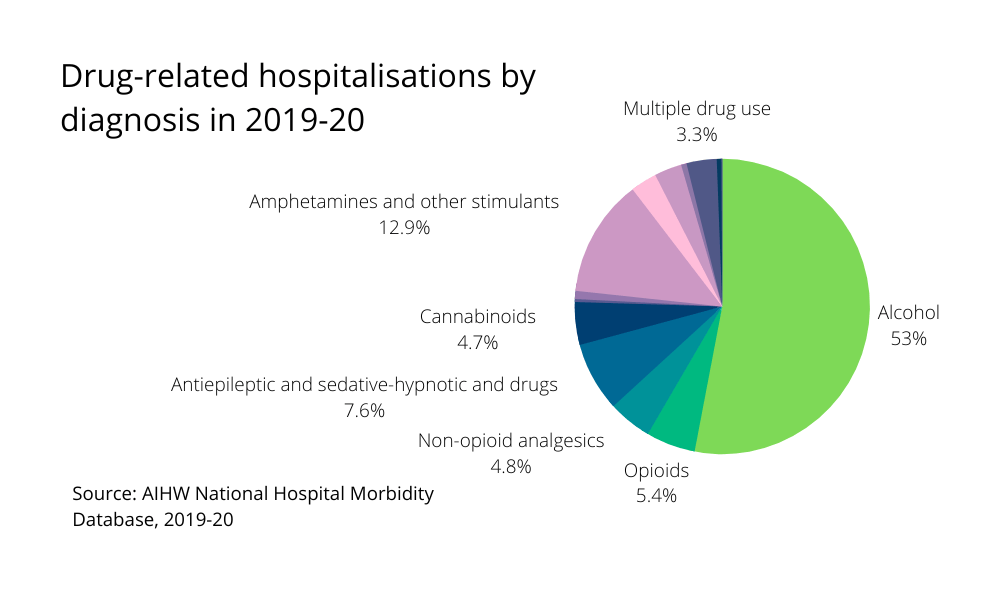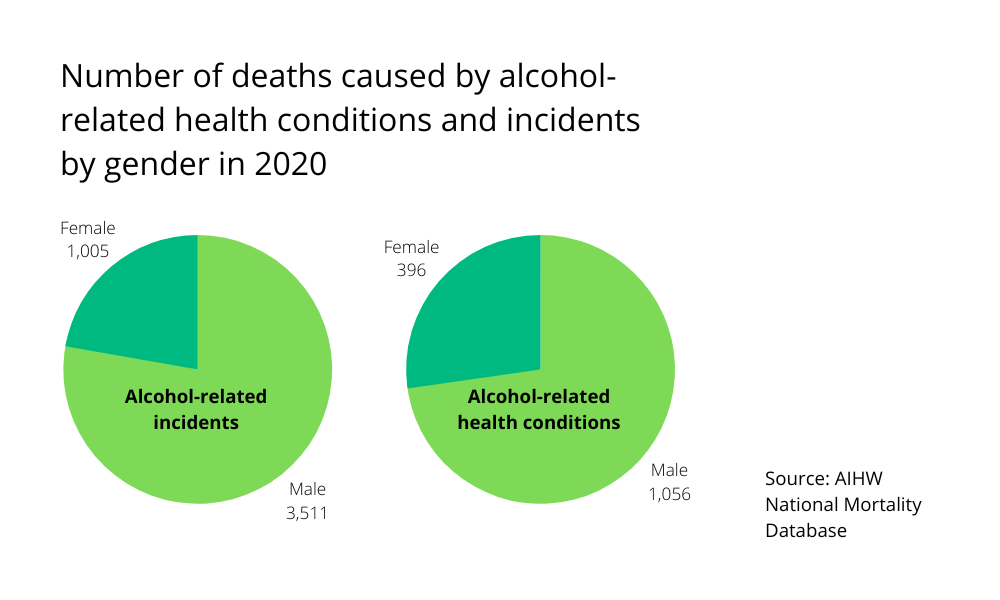The Australian Institute of Health and Welfare regularly updates the Alcohol, Tobacco & Other Drugs in Australia report to consolidate data related to substance use, from the availability of the substances to harmful effects and treatment, so that policymakers can make informed decisions based on solid numbers. As alcohol is a widely accepted and consumed substance in the country, it is one of the focused drug types in the report.
Alcohol use was the 5th highest risk factor contributing to the burden of disease and injury
The burden of disease and injury is a measurement used to assess the impact of different diseases, conditions, and injuries on a population. Based on the Australian Burden of Disease Study 2018, alcohol use was the 5th highest risk factor in Australia following tobacco use, overweight, dietary risks, and high blood pressure.
The report shows that alcohol use is a burden of disease and injury in:
- 100% of alcohol use disorders
- 40% of liver cancer
- 25% of road traffic injuries involving drivers
- 19.2% of chronic liver disease
- 14.2% of suicide and self-inflicted injuries
Alcohol intoxication is the leading cause of all alcohol and other drug-related ambulance dispatches
In 2021, a total of 33,918 ambulance attendances throughout Australia were related to alcohol intoxication. New South Wales, Victoria and Queensland recorded higher ambulance dispatches in rural areas than in the cities whereas the opposite was true for Tasmania.

Alcohol accounts for over 53% of drug-related hospitalisations every year
Drug-related hospitalisations are hospitalisations as a result of a diagnosis related to a substance use disorder or direct harm caused by substance use.
Alcohol remains the most common drug that leads to drug-related hospitalisations between 2015 and 2020, compared to other illicit substances such as opioids, amphetamines, and cocaine. The number of hospitalisations caused by alcohol use peaked at 75,765 in 2018-2019 within the 5-year period.

Nearly 6,000 deaths each year are caused by alcohol-related health conditions and incidents
Deaths caused by alcohol-related health conditions are determined through toxicology and pathology reports where conditions like alcohol poisoning are identified whereas death as a result of alcohol-related incidents are only attributed when alcohol was listed as an associated cause of death, such as a road accident where a person was found to have a high BAC reading.
In 2020, there were 1,452 deaths caused by alcohol-related health conditions, especially liver disease, and 4,515 deaths attributed to alcohol-related incidents. Males had a higher death rate caused by alcohol-related health conditions compared to females at 73%.

While the ultimate aim of implementing an alcohol and drug testing policy in the workplace is to ensure the safety and productivity of employees, it can undeniably contribute to more mindful drinking habits as people become more educated and are reminded of the harms caused by alcohol intoxication. Hence, employers should view the bigger picture of alcohol and drug testing in the workplace; it leads to the greater good that is a safer, healthier and happier Australia.





